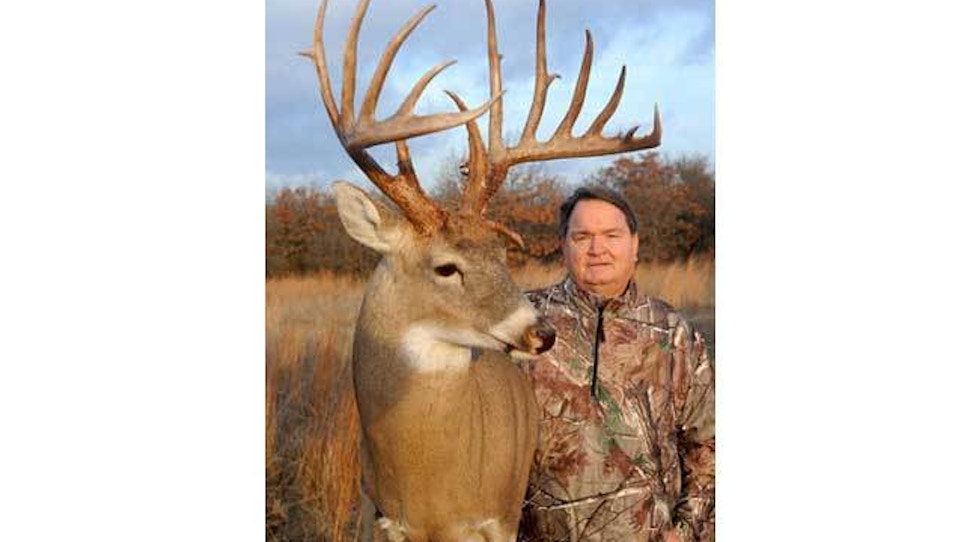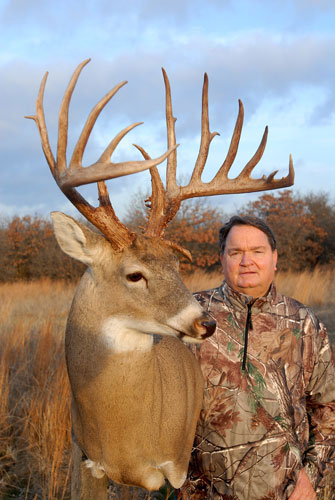Setting out a game camera in the early season is a great way to monitor the deer activity at your hunting spot. Since deer are creatures of habit, they can be patterned easily in the early season by using wildlife cameras to monitor their food sources. Using game cameras can tell you the age structure of the deer in your area, the times they are most active, and the numbers of bucks and does. Armed with this information, you can then formulate a "hit list" of deer marked for harvest.
If you don't have cattle roaming all over your hunting grounds, finding active game trails is a fairly easy process. Generally, deer travel a network of trails in their daily travels. Most of the time, these trails are well-worn. When you find a well-used trail, follow it to a known feeding area like persimmon trees, fruit trees, an acorn-covered ridge, or near new growth areas of green grass — these are spots where deer like to feed and browse.
Experts suggest setting cameras up just off food plots, too. Due to the wide-angle capabilities of cameras like Moultrie's Panoramic 150, large food plots can be easily monitored. Some game cameras today have software that allows you to view the entire day's activities in a few minutes time. This is a handy feature that allows you to see where deer like to enter and exit a field.
If you will be hunting by a game feeder, it's wise to set up a wildlife camera to monitor any deer that come to feed. Deer have a weakness for corn, and setting up a camera near a corn or protein feeder is an excellent way to get an idea of which deer are using the area.
A good tip (where legal) is to make a bait pile using a couple of 50-pound bags of corn or rice bran. Dump the bags in a big pile in an area where there is no feeder, and then set a game camera up nearby. Once the deer find the sweet carbohydrates, they will eat every kernel and your camera will record the action.
Remember, using multiple game cameras is costly, but considering the old adage that "time is money," it behooves most serious wildlife managers today to duplicate their surveillance efforts when possible.
Moultrie Game Camera Pays Off Big
George Moore hunts some prime suburban property surrounded by housing additions and a golf course in eastern Oklahoma County. This area has produced a state-record typical buck 20 years ago and many respectable bucks since.
Moore heard about a giant whitetail that had been seen on the property next to his hunting area. Thinking he could coax the buck onto his property, Moore planted a few extra food plots and supplemented them with piles of rice bran. He also set out a battery of game cameras to capture the action. The buck soon began appearing on his Moultrie trail cameras.
Moore became obsessed with the big buck and nicknamed him "Most Wanted." In game camera photos, the buck appeared to be a typical, with all the ingredients necessary for a high score — long tines, mass and a wide spread.
Eighteen days into archery season, Moore hadn't seen the elusive monster, but he had a feeling his luck was about to change. Climbing into his treestand for an afternoon hunt, he noticed the weather had cooled off. His wait was brief before does and a small buck appeared and fed beneath him. Suddenly, the deer peered intently into the nearby trees, and then slowly moved away.
Moore wondered if a bigger buck was approaching. With tensed nerves, he slowly reached for his bow, knowing something lurked just beyond his view. In seconds, Most Wanted emerged from the trees and stood 20 yards from Moore's ladder stand, eating the rice bran.
"I couldn't believe he was finally in front of me," Moore said. "I was going nuts. I closed my eyes for a few seconds so I wouldn't get nervous staring at his antlers."
Taking careful aim, Moore released an arrow that passed through the buck's left shoulder. The buck spun and ran, disappearing in an instant. After finding scant blood, Moore decided to back out and search for the buck the next morning.
The next day, Moore's son Matt found a good blood trail and Most Wanted lay 80 yards away. The buck was truly magnificent and Moore knew he would score well.
Sixty days later Most Wanted was officially scored. The antlers were more non-typical than first thought, and taped an amazing 206 5/8 inches gross, netting 191 7/8 inches.
"You know, I attribute my success to being able to follow Most Wanted's movements with my Moultrie game cameras," Moore opined. "Several hunters were after that buck, but my game cameras help me decide which stand to hunt from, where I eventually shot him."







